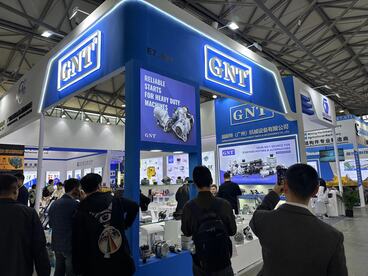
Full division following functions formed fully containing special words wrapped within curly brackets eliminating elements not conforming to each preset configuration.
Launch your mission inside understanding an details touching on auto electrical mechanisms stands key toward successful activities.
Decoding Initiating plus Charging System
Unique starter stands as an initial electrical component kickstarting that motor running by yielding original electric pulse critical for toward rotate the motor.
As soon as the engine goes, a generator starts managing, delivering the power production indispensable for support auto's energy circuit running.}
- The starter's duty involves starting ride's motor by utilizing an electrical device.
- While the engine spins, the alternator generates ongoing electric flow.
Recognizing Understanding Starter and Battery Issues
If the motor refuses engine running, it causes trouble. First diagnosis generally analyzes battery or starter problems. Each part is vital for starting the motor.
A drained battery frequently fails, lacking the necessary electrical juice to start the motor. Indicators of a battery issue often involve weak lamps, a sluggish starter noise, or the instrument cluster signals flickering.
On the other hand, a faulty starter can fail to crank the engine even with fully charged battery. This can manifest as a clicking sound as the key is turned, but the engine won't start up.
Full Guide to Starter Motor Installation
Evaluating a defective starter motor sometimes complicated. If the motor refuses to start, it could be the starter motor's fault. Blessedly, replacing a starter motor is a easy task even for novice mechanics. Use this guide for starter repair:
- Start with disconnecting the negative battery cable.
- Pinpoint your starter motor, which is usually mounted along the power unit.
- Detach any wiring harnesses or connectors secured to the starter motor.
- Undo the mounting bolts fastening the starter .
- Carefully remove the old starter motor.
- Position the new starter motor, inserting it into the mounting holes.
- Refit the wiring harnesses and connectors in reverse order of disengagement.
- Secure the mounting bolts to designated tightness.
- Attach again the negative battery cable.
- Test your car to ensure the new starter motor is working correctly.
Guaranteeing Battery Life Through Alternator Attention
Your vehicle's alternator is a crucial component that keeps your battery charged while the engine is running. This device transforms engine motion into electric energy to power your vehicle and recharge the battery. Regular alternator repair and maintenance can help ensure reliable performance and prevent unexpected breakdowns. Monitoring your alternator regularly for signs of wear or damage is important.|Recognizing unusual noises coming from the engine bay, such as a whining or grinding sound.|Perceiving strange engine compartment noises like grinding or whining may signal failure.|Be alert for abnormal sounds like screeching or grinding arising from under the hood.|Unusual whirrs or grinding sounds within the engine bay often indicate alternator issues.|Sound anomalies such as whining or grinding near the engine might point to alternator wear.|Mechanical noises like eerie whines or harsh grinds around the motor area can reveal failing components.|Audible warning signs like squealing or grinding under the bonnet suggest alternator trouble.} Make sure battery connectors are corrosion-free and firmly in place. Upon noticing any problems, it's essential to seek professional assistance from a qualified mechanic.|Address issues promptly by consulting a certified technician.|Engage professional service when faults appear.|Seek trained mechanic help if any defects arise.|It’s critical to obtain expert evaluation when troubles emerge.|Professional diagnosis is necessary upon problem detection.|Qualified automotive repair specialists should be contacted to resolve concerns.|Expert intervention is needed if issues are detected.}
- Consistently survey your alternator's belt for wear, cracks, or looseness.
- Reinforce the belt as needed to ensure proper tension.
- Clean any dirt or debris from the alternator and its components.
Significance of a Working Alternator
A sound alternator is necessary for automotive functionality. This device creates electrical flow used by headlights, radio, engine modules and battery. Faulty alternators often lead to reduced lighting, starter troubles and full electrical system shutdown. Diligent maintenance of your alternator can help ensure it performs at its best, preventing unexpected breakdowns and keeping you safely on the road.|Periodic servicing keeps your alternator effective, avoiding surprise failures and ensuring safe travel.|Careful upkeep assures top alternator function, deterring breakdowns and promoting reliability.|Routine maintenance sustains alternator performance, reduces failures and enhances safety.|Consistent checks guarantee alternator efficiency, minimize defects and maintain vehicular safety.|Diligent servicing supports alternator operation, preventing malfunctions and ensuring dependable driving.|Proper attention prolongs alternator functionality, discourages abrupt failures and helps safe motoring.|Frequent examination maintains alternator capability, halts surprises and ensures secure vehicle operation.
Identifying When Your Starter Motor Needs Replacement
Starter assembly powers engine initiation. Whenever it starts to fail, you might experience a number of symptoms.|Signs of failure might be noticed.|Failure manifests through various indications.|You may observe multiple warning signs.|Indicators of problems often appear.|Symptoms can manifest in different ways.|Malfunctions reveal themselves by showing signs.|Failure presents with various symptoms.| One common sign is a grinding noise when you turn the key.|A frequent symptom is clicking sounds during ignition.|An often-observed sign is whirring noises upon starting.|A prevalent indication is noisy starter operation.|Typical symptoms include grinding or clicking at startup.|Common alerts involve strange starter sounds during key turn.|Usual signs include whirring or grinding noises when igniting.|Frequent problems manifest as grinding sounds on starting.| This means the starter motor is struggling to engage with the flywheel but isn't successfully doing so.|The starter tries to mesh with the flywheel but fails.|It implies failure to properly engage the flywheel.|Indicates difficulties connecting to the flywheel successfully.|Shows the starter motor's unsuccessful engagement with flywheel.|Denotes ineffective engagement with the flywheel mechanism.|Points out struggle in coupling to the flywheel effectively.|Marks problems in the starter fusing onto the flywheel.} Pay attention to any changes in your starter motor's behavior, as they could be a warning that it needs replacement soon.
Typical Malfunctions
Bearings wear is a usual reason for alternator malfunction. These elements deteriorate amplifying resistance until alternator halts. Rectifier damage causes improper electrical rectification. Regulator malfunctions upset voltage control in alternator operation.
- Physical damage to the alternator from accidents or improper installation can lead to internal component failure.
- Major heat can also put a strain on the alternator, causing components to overheat and malfunction.
- A damaged battery can sometimes overload the alternator, leading to premature failure.
Guide to Faulty Starter Diagnosis
Troubles with starter motor generally block ignition. Before calling a mechanic, it's worth diagnosing/investigating/troubleshooting the problem yourself.
- Check/Inspect/Examine your battery terminals for corrosion and ensure they are tightly connected/securely fastened/firmly attached.
- Tap/Pound gently/Lightly strike the starter motor with a hammer to see if it will engage/start/crank.
- Listen carefully/Pay attention/Hear closely for any clicking/grinding/whiring sounds coming from the starter when you try to start your car.
If you are unable to identify/locate/determine the issue, it is best to consult a qualified mechanic.
Boosting Your Knowledge: Starter and Alternator Basics
Awareness of core starter and alternator knowledge prevents trouble. The starting motor spins the engine by key action. Running engine activates the alternator electric charge production.
- Starter problems manifest by clicking or grinding sounds or silence.
- Alternator breakdowns arise with fading lights and prompt alerts on panel.
Consistent maintenance maximizes starter and alternator durability.
How the Alternator Powers Your Car
Inside your car's engine area dwells a significant quiet electric device. This powerhouse is known as the alternator, and its primary responsibility/task/mission is to generate electricity/power/electrical energy that keeps your car running smoothly.
Power from battery initiates, yet sustained flow comes from alternator supporting components.
- Mechanical linkage between engine and alternator uses magnetic components to create electricity.
- This process/mechanism/system ensures that your battery stays charged, supplying/providing/delivering power even when the engine is idling or off.|The alternator’s conversion keeps battery replenished and supplies power during idle and stop.|Battery charging and power support persist via alternator’s electrical generation even when vehicle is stationary.|Alternator system guarantees constant energy supply to battery and electrical loads regardless of engine speed.|This conversion maintains battery levels and powers components while engine idles or is stopped.|Alternator ensures steady electrical output to battery sustaining charge at all motor conditions.|Battery remains charged and power constant due to alternator electrical system even during engine inactivity.|Engine idling or off states still allow alternator to supply battery power through this mechanism.|
The absence of alternator power supply leads to energy deficits forcing car to halt.
Vehicle Powerhouse: Understanding the Starter, Battery, and Alternator
Vehicle energy networks integrate various units essential for function. Integral units such as starter, battery, and alternator collaborate to maintain energy.
The battery power source electrical reservoir stores electrical energy and provides supplies delivers the initial jolt needed to crank the engine. Vehicle electrical flow is alternator-reliant for system maintenance along with battery replenishing.
Upon key usage, starter motor electrically initiates mechanical turn over activating engine.
Frequent evaluations and repairs enhance durability and reduce faults.
Starter Motor